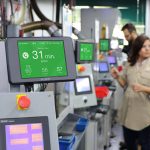Operational Excellence: The Key To Success For A Contract Manufacturer
What is a contract manufacturer?
Many terms are used to describe manufacturers: Original Equipment Manufacturers (OEMs), job shops, assembly shops, printers, fabricators, molders, forgers, and so on. But “contract manufacturers” are those responsible for:
- Producing products to the specification of the customer.
- Acting as a part of a supply chain to a larger company.
- Are typically smaller than their customers, and they are often privately held.
- Have a focused technical competency, such as injection molding or Swiss machining.
- Producing a wide variety of products, often in smaller quantities.
Competing as a contract manufacturer
Contract manufacturers compete in a harsh environment. They don’t own the product design, and their competitors are bidding for the same projects. In many cases, it’s the customer who dictates the service levels and materials. Even the equipment tends to be off-the-shelf, providing a competitive advantage only until the competition buys a newer, bigger, better, or faster machine.
The only sustainable competitive advantage is to execute better than the competition. Improvement needs to be a way of life. Contract manufacturers need to take the same cards that are dealt to their competition and play them smarter.
Making the most of the stages of Operational Excellence (OE) as a contract manufacturer
Contract manufacturers often use Lean techniques to drive improvement. They’ll start with the low hanging fruit, using the 5S technique to sort, set in order, shine, standardize, and sustain before they progress to setup reduction and machine uptime. In the early stages, the opportunities and magnitude of improvement are apparent and easily measured.
As the company moves forward, the improvements become more granular. In the early stages, you could just ask the operator what the most prominent issues are, and you’d have a pretty good idea of where to focus your improvement efforts. However, as you get more advanced, the opportunities aren’t as apparent. Maybe the setup took 20 minutes instead of 15, or the part is running 5% slower than the target.
These minor issues can go undetected, but they can add up to a significant performance gap. If your company can minimize these minor issues while your competitors accept them as a way of life, you’ll have a competitive advantage.
The importance of accurate data collection
Identifying these opportunities takes data. Move from “I think” and “I feel” statements to knowing, “This is what the data is telling us.”
In the early stages of OE, you can get by with handwritten charts and manual data collection, but this will not scale well and tends to fall apart as you get more advanced. The data needs to be more detailed and reliable than you can get from handwritten tally sheets. It also needs to be easy for the operator. If the operator needs to choose between hitting his production target or tracking data, production will win.
A new era of data availability
Before recent advances with data collection, companies didn’t have many choices. They could invest in a Manufacturing Execution System (MES) that integrated directly with the shop floor Programmable Logic Controllers (PLC), but this option was cost-prohibitive to smaller organizations. Another option was to put an engineer on the shop floor to capture detailed data, but this method could only be applied infrequently and in exceptional circumstances.
But now, with the advanced data collection methods available within the Industry 4.0 Revolution, there are accessible options for contract manufacturers of all sizes. The companies that have established a culture of continuous improvement will uncover a new wave of opportunities to lead them into a higher level of production.
The money is in the last 10%
One might argue that eliminating the smaller wastes isn’t worth the effort. But the fact is, companies make their money on the last 10% of profits. The first 90% of profit pays all of the bills, but it’s that last bit of throughput that turns the corner from break-even to profitability. OE is not about cost reduction. It is about liberating capacity and allowing a company to create more throughput without adding costs. Unleashing the 10% that the competitors can’t seem to find could be exactly the competitive advantage you need.




